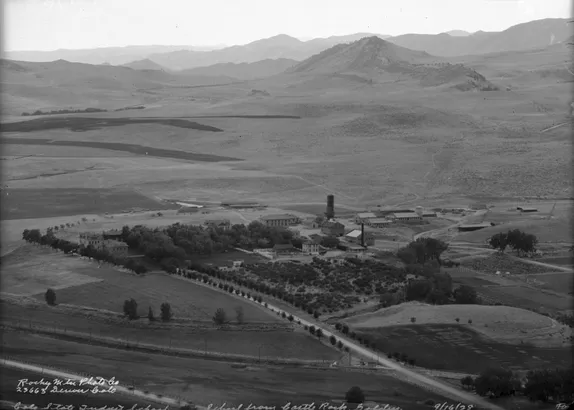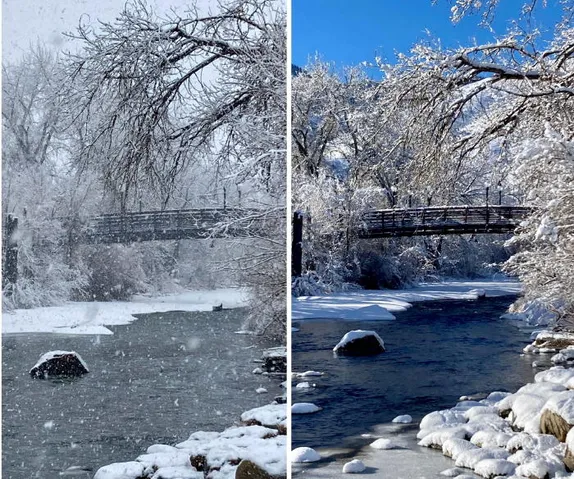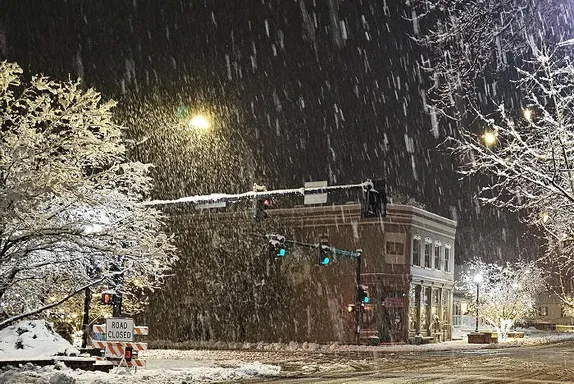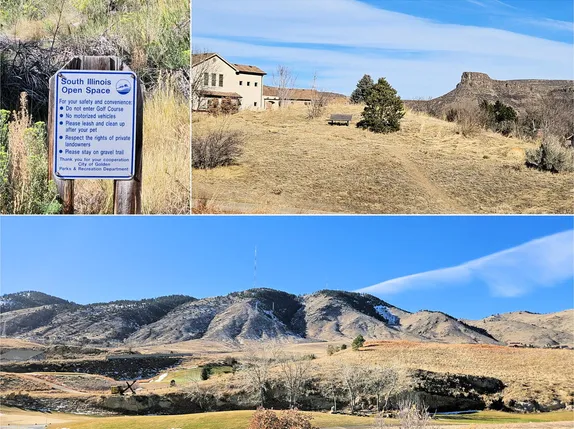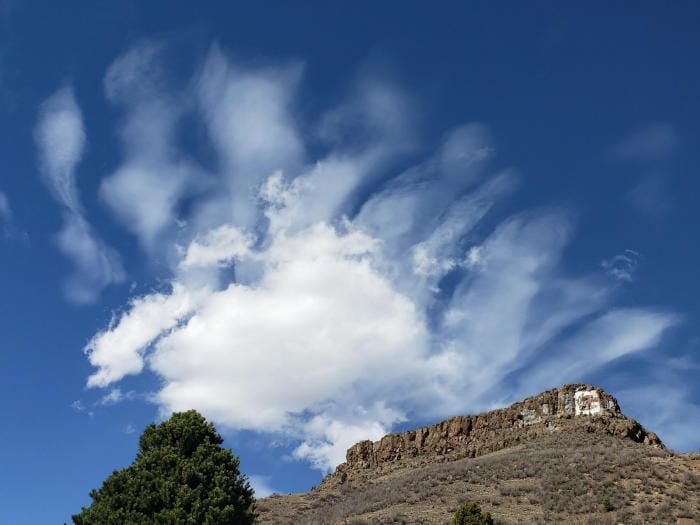

WHAT’S HAPPENING IN GOLDEN TODAY?
7:30AM Golden Young Professionals Monthly Membership Meeting @ Golden Visitors Center
9-9:55AM Silver Sneakers Classic (Virtual)
9:15-9:45AM Baby Time @ Golden Library
10AM Wild West Walking Tour
10AM and 1PM Wild West Short Tour
10-10:30AM Call In: Mid-Morning Meditation (Virtual)
10-10:55AM Chair Yoga (Virtual)
10-11:30PM Everything Dinosaur Lecture @ Dinosaur Ridge Discovery Center
6PM Run Club @ Runners Roost
5-8PM Blue River Grass @ Golden Mill
6PM The Trail Running Film Festival @ American Mountaineering Center
6:30-8:30PM Sip & Paint @ Holidaily
7PM Parks, Recreation and Museums Advisory Board Meeting @ City Hall
The Parks board will discuss the Bike/Pedestrian Plan, the South Neighborhoods Plan, and the Arts & Culture Master Plan.
7:30PM I Hate Hamlet @ Miners Alley Playhouse (through April 23)
See the complete calendar of events.

LIVE MUSIC

5-8PM Blue River Grass @ Golden Mill
5-8PM Daddy Flaherty @ Goosetown Station
5-8PM Teague Starbuck @ Mountain Toad

6-9PM Bunny Blake @ Buffalo Rose (Sky Bar Stage)
6PM Buffalo Galaxy @ New Terrain Brewing
8PM Karaoke @ Rock Rest Lodge

GOLDEN HISTORY MOMENT
Golden’s founders had a very 19th-century view of the earth–it was there to be used. In their view, it provided an endless source of riches to those who worked to extract what the earth could offer.
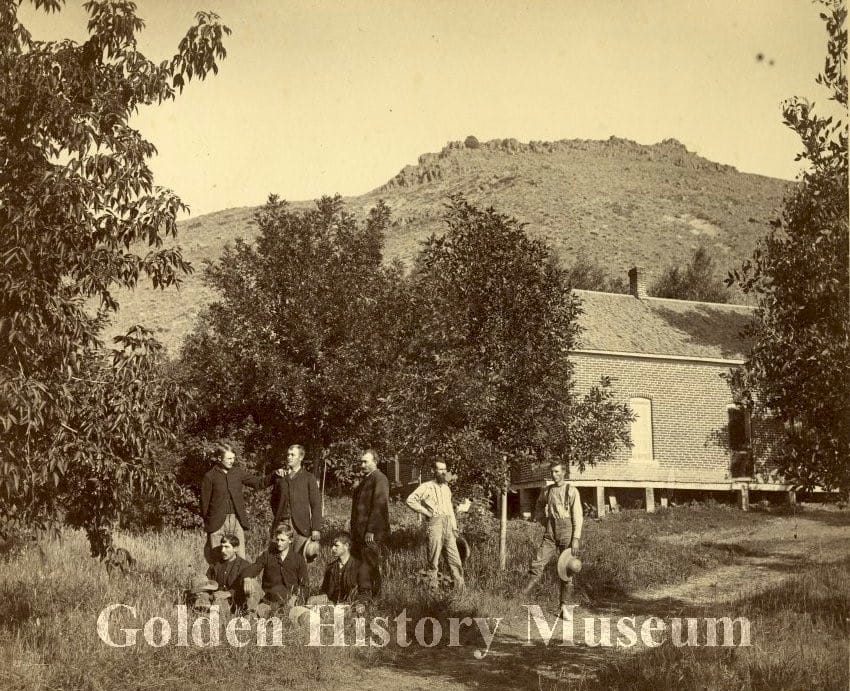
In 1870, two of our biggest industries were mining and agriculture. The mining towns (Central City, Black Hawk, Idaho Springs, and Georgetown) were of interest to everyone who wanted to see the Territory grow and thrive. New mines and new technologies that improved the processing of ore were cause for celebration. Also important, though perhaps less exciting, were our farms and gardens, which were made possible by a network of ditches fed by Clear Creek.
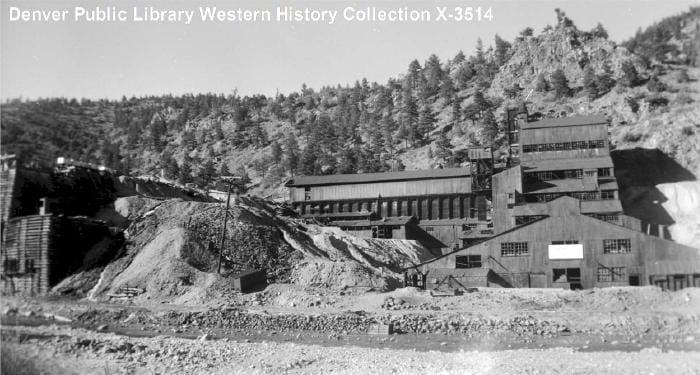
It wasn’t until 1880 that conflict between the two concerns arose. It was standard practice at that time to dump industrial waste into waterways, where it would be carried away by the rush of the water. As the mining industries grew, and their waste products with them, the farmers downstream found that the water from Clear Creek began poisoning their crops and soil.

In 1882, the farmers began trying to put legal pressure on the mines and mills to stop polluting Clear Creek. They had no luck. They tried again, with more emphasis and organization, in 1887. By this time, agriculture had become a more important component of our economy, but they still made no headway.
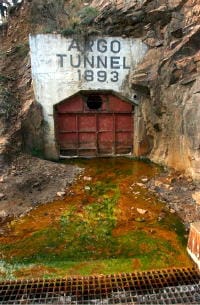
The matter became even worse in 1893, when the Argo Tunnel was built. The tunnel allowed all of the mines to drain their excess water through the tunnel to flow into Clear Creek. This increased the concentration of heavy metals in the water, and made the Creek still more toxic.
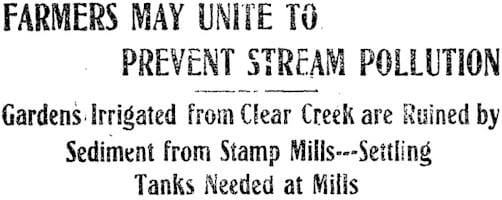
The matter rose to the surface again in 1915. By this time the farmers were beginning to organize into Granges, which allowed them to combine their voices to lobby the legislature. In 1917, the Granges initiated a “Pure Clear Creek” campaign. In 1919, they were still lobbying and proposed a bill which would require the mines and mills to stop polluting the Creek. They agitated for several years, with no notable success.
As an aside–by this time, the City of Golden was using a separate water supply, drawn from Beaver Brook, a more remote mountain stream. Thus, Golden was not directly affected by Clear Creek water quality.
In 1928, a new group joined the fray, lending their support to the farmers in trying to stop upstream polluters. The Izaak Walton League is a conservation group, concerned with clean water and clean soil. They were especially interested in making the water fit for recreational use, particularly fishing.

The combined efforts of the farmers and conservationists were still not effective. Mine waste continued to go into the Creek.
In 1934, Golden found itself in an embarrassing situation. Having shown appropriate shock and indignation at the industrial polluters upstream, they found themselves accused of dumping raw sewage into the Creek (which they were–as were all of the other towns along the Creek).
The Depression had set in by this time, and both mines and municipalities were able to plead poverty as an excuse for not cleaning up their effluent. Both groups fended off legal action for many years.
Golden was finally rescued from its situation when Coors began treating our sewage in 1953. That left us free to rejoin the people trying to make the mines clean up their decades-old messes and current practices.
The nation was becoming more ecologically-conscious in the 1960s. Colorado’s Governor Love proclaimed a “Clean Streams Week” in 1967, declaring that water pollution control is everyone’s job.
In 1970, Senator Gaylord Nelson of Wisconsin organized the first Earth Day. Students at Golden High School observed the event with a guest lecturer, an environmental film, and discussion groups about environmental issues.
Earth Day helped focus many scattered environmental movements. 1970 also saw the formation of the Environmental Protection Agency and the establishment of the Clean Air Act. The Clean Water Act followed, in 1972, and the Superfund law was enacted in 1980.
These Federal laws finally did what no amount of protesting had accomplished–they cleaned up the old mines west of Golden. In 1998, Superfund paid for a water treatment plant in Idaho Springs, so that mine water was cleaned before it entered Clear Creek.

Thanks to the Golden History Museum for providing the online cache of historic Transcripts, and to the Golden Transcript for documenting our history since 1866!


